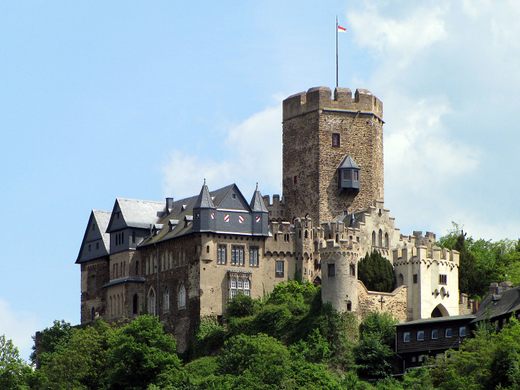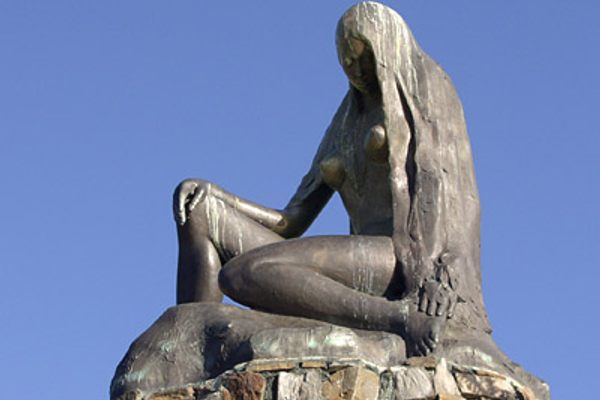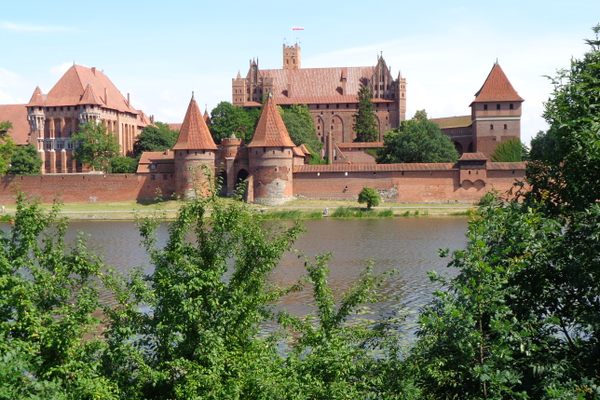AO Edited
Burg Lahneck
Centuries of warfare, tragedy, executions, and poetry come together in this 13th-century fortress.
From its original construction in 1226, all the way up through the 20th century, Burg Lahneck has experienced many notable events that have led to it’s intriguing tale including several wars, political unrest, the tragic death of a young noble. The castle even inspired the German poet Johann Wolfgang von Goethe.
The castle was built at the confluence of the Lahn and Rhine rivers by Siegfried III of Eppstein in order to protect the town of Oberlahnstein and a nearby silver mine. In subsequent years the castle became the setting for several battles and political strife. In 1309, the castle was stormed by King Albert I of Habsburgs after the Burgrave of Lahneck, Friedrich Schilling of Lahnstein who occupied the castle, participated in a conspiracy against Albert. Albert’s forces storming of the castle was successful, and Schilling was executed at the castle for his part in the conspiracy.
Another event of note would be the slaying of the last Knights Templar warriors. When Pope Clement V demanded the Knights Templar disband in 1312, the legend goes that the last 12 Templars barricaded themselves within the confines of Burg Lahneck. All perished in a desperate fight against the overwhelming forces of Mainz Archbishop Peter of Aspelt.
Several centuries later, in 1633 during the Thirty Years War, the castle was assaulted and left in relative ruin by the passing Swedish and imperial troops.
Burg Lahneck also holds a note of literary importance as it is was the inspiration for Johann Wolfgang von Goethe’s poem, “Geistesgruß” or “Ghost Greetings”. It is said Goethe felt the need to pen the poem after spotting the castle during his travels along the river Lahn on July 8, 1774.
Goethe’s poem however, is not the only event concerning the castle that is remembered in writing. In June of 1851, a Scottish family visited the area of Burg Lahneck on holiday with their 17-year-old daughter, Idilia Dubb. The story goes that Idilia went out to sketch the Rhine river valley and its surroundings to keep as a keepsake when they returned to Scotland. In search of a breathtaking vantage point of the valley, Idilia entered the abandoned Lahneck Castle and climbed the wooden staircase to the top of the castle’s keep. Unfortunately, due to countless battles which left the castle in ruins and the lack of repair or upkeep, the wooden staircase leading to the top of the keep collapsed once Idilia reached the top. She was now trapped at the top of the ruined castle, and due to the high walls surrounding her, her cries for help were unable to be heard by anyone in the vicinity. Her family searched for her, but to no-avail, and eventually returned to Scotland. Nearly 10 years later in 1860, German workers repairing the castles keep found Idia’s skeletal remains at the top of the castle. It is said that her diary was found next to her body, documenting her trip to the area and the last moments of her life in the ruined castles keep.
Historians have been skeptical about the validity of the diary, however that has not prevented it from being printed in mass publication in 2002 under the title “Das verschwundene Mädchen : die Aufzeichnungen der Idilia Dubb” or “The Missing Girl: The Records of Idilia Dubb.”
















Follow us on Twitter to get the latest on the world's hidden wonders.
Like us on Facebook to get the latest on the world's hidden wonders.
Follow us on Twitter Like us on Facebook